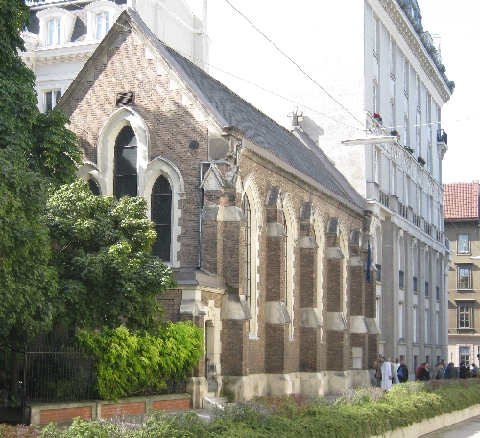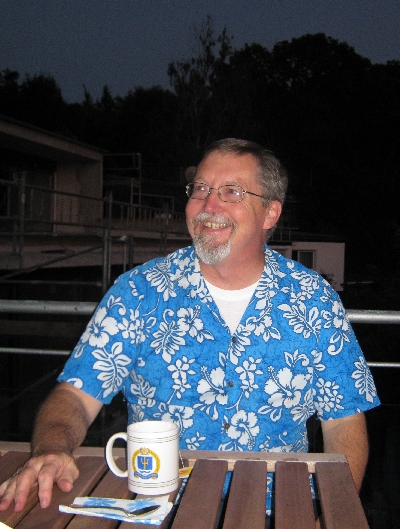
On Thursday 16th September, only a week after our previous trip, we once more drove the length of the Prague – Brno motorway. This time we then headed further south over the border into Austria and travelled onwards to Vienna in order to attend the annual meeting of our Eastern Archdeaconry Synod.
As I’ve blogged previously, St. Clement’s Anglican Episcopal Church, Prague is part of the Church of England’s forty fourth diocese, the Diocese of Gibraltar in Europe. As with the other 43 dioceses that make up the Church of England, the Diocese in Europe is divided into Archdeaconries – in our case, into seven Archdeaconries. Even the smallest of these, the Archdeaconry of Switzerland, covers the whole of one country. And Prague belongs to the largest of the seven, the Eastern Archdeaconry, which consists of everything eastwards from Poland, Czech Republic and Austria, including all of the former Yugoslavia, Greece, Turkey and all the former Soviet Union except for the Baltic States.
Once a year, each Archdeaconry has an Archdeaconry Synod where the clergy, together with elected lay representatives, meet to discuss and report on issues facing our scattered congregations, to pray and to study, as well as to make decisions regarding the common life of our chaplaincies. Because of the distances involved, the synod meetings have to be residentiary. However, unlike in 2009 when the synod meeting took place in Izmir, Turkey, this time it was hosted by Christ Church, Vienna, meaning the car journey to get there took half a day rather than three & a half days!
The synod meeting took place in Pallottihaus, a Roman Catholic retreat house situated in the Vienna suburbs. It was an ideal venue with its own Chapel for worship, an excellent meeting room for listening to speakers and the discussion of synod business, as well as comfortable double and single rooms for overnight accommodation.
The major item for discussion was a plan, approved in principle by the Diocesan Synod earlier in the year, for the creation of four so-called ‘freestanding Archdeacons’ to provide better pastoral care and support for the clergy and Chaplaincies of our far flung diocese. The seven current Archdeacons have the almost impossible task of both being Archdeacon and being the Chaplain of a large Chaplaincy. My Archdeacon Patrick Curran is both Chaplain of Christ Church, Vienna as well as Archdeacon of the East.
The major issue regarding the scheme is, not surprisingly, one of cost. There is hope of some central funding coming from England and also the possibility of a private donor helping with accommodation. But inevitably, part of the funding will have to come from increased contributions from individual Chaplaincies. The Archdeaconry Synod gave its backing to the plan recognising the need for it and accepting the inevitable additional costs that will ensue.
On the morning of Sunday 19th September, the synod concluded with a Eucharist at Christ Church, in the centre of Vienna. The synod members joined the regular Vienna congregation and Archdeacon Patrick was the celebrant and preacher.
The Christ Church building itself is a typical product of nineteenth century British diplomacy and politics. It is situated directly opposite the British Embassy and even has a memorial on an inside wall commemorating the reign of Queen Victoria! However, like nearly all the Chaplaincies in our diocese, the Christ Church congregation has long since ceased to be solely ‘the Brits abroad’. As with St. Clement’s, Prague, there were a large variety of nationalities represented within the packed congregation including many black Africans.
After the service, refreshments and a sandwich lunch were served in the nearby parish centre, just around the corner from the Church. Unfortunately, I had to decline the alcoholic liquid refreshment on offer because of needing to drive back to Prague straightaway afterwards.
Next year, the Archdeaconry Synod will meet in Bucharest and as in 2009, Sybille and I will probably try and combine our attendance with two weeks of annual leave making the journey to Romania all the more worthwhile.











